Following on from my week of diving in the Poor Knights Islands I headed further north towards the Bay of Islands. As the coach wound its way through the sprawling landscape I was captivated by what is New Zealand’s stunning and endless expanse of flourishing green countryside. Despite the landscape being one of the most mind-blowing in the world, there is something so charmingly unimposing about New Zealand. Being here is all about enjoying the outdoors and appreciating the beauty of the mountains, plains, forests and coastlines.
The little roads that curl their way through this country are adorned with makeshift campervans and archaic cars bought by backpackers for their self-guided journeys across the islands. A motorway is hard to find and a flash car seems somewhat out of place. Each town has a campsite, not a 5-star hotel. For someone who grew up running around campsites and gawped at the price of a coke in a 5-star hotel, I was thoroughly enjoying my time in New Zealand.
Nestled amongst the lush countryside of the Bay of Islands is the popular tourist town of Paihia. Known by most visitors as the place to swim with dolphins or to see the “hole in the rock”, it is known by divers as the place to come to dive the wrecks of the Rainbow Warrior and the Canterbury. Hence my visit.
My hosts for the week were Craig and Lisa Johnson and their three sons – Hamish, Toby and Vinnie. These three boys have to be the most entertaining kids I have ever met and they made for a fun-filled and very amusing week (regardless of the fact that 10-year old Hamish consistently beat me at chess, despite my genuine best efforts to win). Craig and Lisa run Paihia Dive, a small and friendly dive centre situated on the main street in Paihia. I have visited a lot of big dive centres so far this year so it made a nice change to spend time in a smaller centre where I could get to know the great team and get to grips with the overall running of things.
So now that I was in Paihia I was keen to see more of New Zealand’s underwater highlights. Having just had an awesome week diving in the Poor Knights Islands with Dive! Tutukaka I had a taste for New Zealand diving, and wrecks were becoming a highlight. In Paihia wreck diving was to take precedence, much to my delight. Over the course of the week I got to dive both the Rainbow Warrior and the HMNZS Canterbury – the latter being the sister ship of the Waikato, which I had dived upon the previous week with Dive! Tutukaka.
I kicked off with a dive on the Rainbow Warrior, which was once the Greenpeace flagship. The story of how this wreck came to lie in 28m of water in the Cavalli Islands – which are just a short rib ride out of Matauri Bay north of Paihia – is well renowned. I, however, didn’t know the story and listened in fascination as Craig recounted the history of the Rainbow Warrior before the first dive of the day.
In July 1985 the Rainbow Warrior was moored in Auckland Harbour where it was preparing to sail to the French Polynesian atoll of Moruroa to protest against the testing of nuclear warheads. In doing so the ship would be illegally entering French military zones. The French Government decided allowing the protest to go ahead would be endangering many people and in a plot later uncovered by the New Zealand police the French Secret Service bombed the ship right there and then in Auckland harbour. No casualties were intended, but a man named Fernando Pereira was killed by the second of two bomb blasts as he returned to the ship to rescue his camera.
The ship was irreparable and transported to Matauri Bay, where the local M?ori people now maintain its guardianship. It was scuttled here in December 1987 and for over two decades the Rainbow Warrior has been a draw for wreck divers and Greenpeace pilgrims alike. Lying in one piece on a sandy bottom at 28m, the total length of the ship is 55m, which makes lapping the ship in one dive more than achievable. As Paihia Dive’s trainee Divemaster Adam guided me around the ship, beginning at the stern and making our way round the starboard side towards the imposing bow, I checked out the scorpion fish and eels hiding out underneath the soaring mass of the ship.
The bow of the ship is a striking feature. With vis reaching 15m+ I was able to hover on the sandy bottom in front of the wreck and gaze up at the towering bow. When the Rainbow Warrior was scuttled here it was also declared a fish sanctuary and the fish life on the wreck is certainly thriving. Indeed the entire wreck is a thriving ecosystem. The bow is spattered with luminous blue anemones and kelp has turned the deck into a self-contained forest. As you enter some of the swim throughs from the main deck you find rooms filled with big eye fish and mackerel, all of which scatter rather neatly as you intrude upon their hideout.
I did a few dives on the Rainbow Warrior during my time with Paihia Dive. Although the wreck is relatively small in comparison to a lot of the other wrecks in New Zealand it has a special story and there is an abundance of life to keep even the non-wreck lovers happy. For novice deep or wreck divers it makes for a perfect introduction to both. At 28m it is deep, but as you tour the wreck you gradually ascend and your decompression limits aren’t pushed. And when the vis is good the entire ship is simply laid out in front of you with wide swim throughs and light-filled penetrations.
The HMNZS Canterbury is a little different. I could have quite easily pushed my deco limits as I explored around this 113m long wreck lying in 38m of water. In a similar story to its sister ship the Waikato, the Bay of Islands Canterbury Charitable Trust bought the Canterbury for $1 and it was scuttled in November 2007 to create a new artificial reef. Resting in Deep Water Cove, a sheltered location just a short boat ride from Paihia dock, the Canterbury is an excellent alternative to diving the Rainbow Warrior when the weather picks up.
The weather did pick up when I was in Paihia so I had ample opportunity to explore the Canterbury. This ship was scuttled with divers in mind, and you certainly notice that when you’re diving it. The penetrations have been stripped of most of their clutter, doors have been fully removed, new exits and entry points have been added and in contrast to the Waikato it lies in one piece on the seafloor. Indeed the penetrations are so accessible that you can practically swim the entire length of the ship from the inside with plenty of light streaming in from the doorframes. I peeked into countless rooms as Craig guided me through the front windows of the bridge and down through a hatch into one of the main corridors of the ship. Desks, chairs, warning signs, ladders and telephone boxes still remain inside the ship, which saw operational service in locations such as East Timor and the Persian Gulf with a crew of over 250 men onboard.
Today the local Hapu people manage the Canterbury and fishing is not allowed in the surrounding area. It was heartening for me to visit New Zealand and witness how much is being done to preserve and sustain the marine environment and diving industry in this country. The Rainbow Warrior, Canterbury, Waikato and Tui (another wreck on the Tutukaka coast) have all been scuttled to provide artificial reefs. In getting to dive three of these wrecks I was able to see first-hand how successful they have become at both sustaining a diverse ecosystem and heightening divers’ interest.
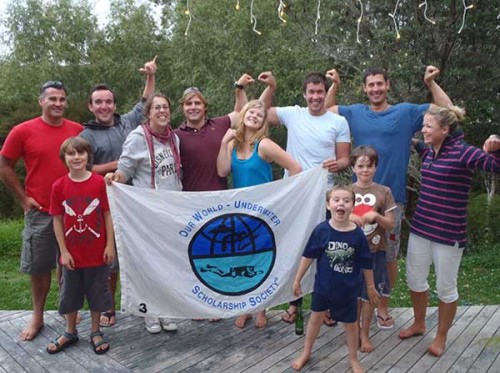

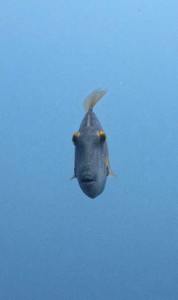
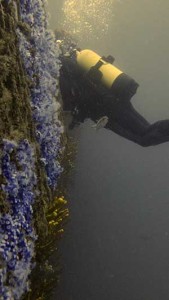
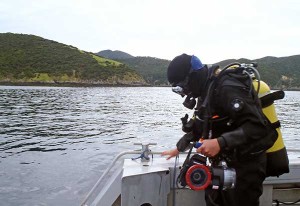
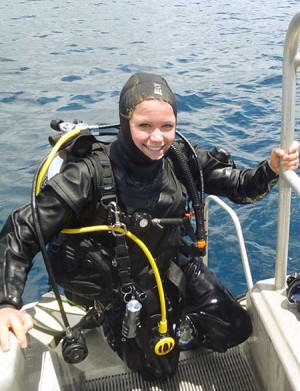
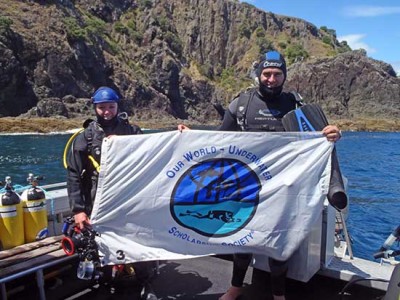
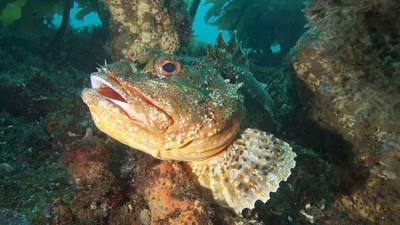
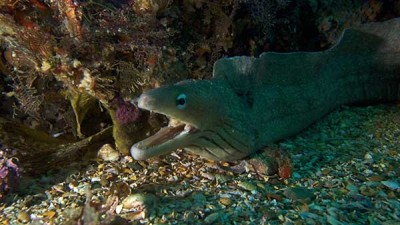
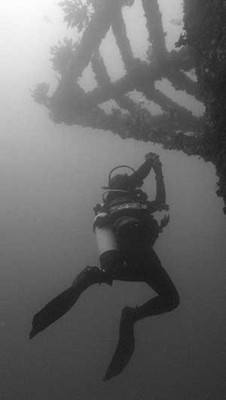
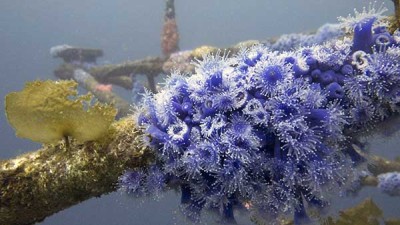
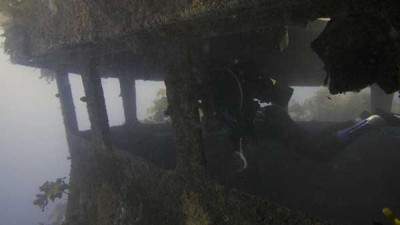
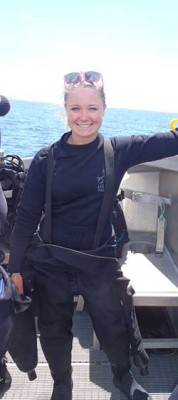
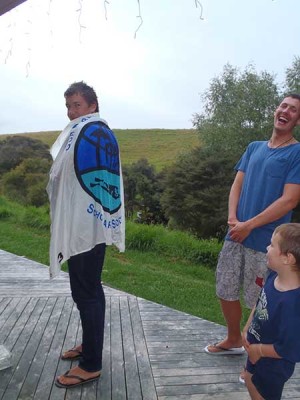
It was a real pleasure having you join us at Paihia Dive for the week. Good luck with the rest of your travels Erin, and we hope to see you back in New Zealand in the future.